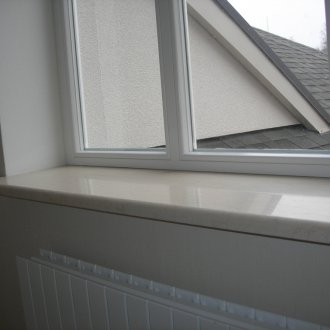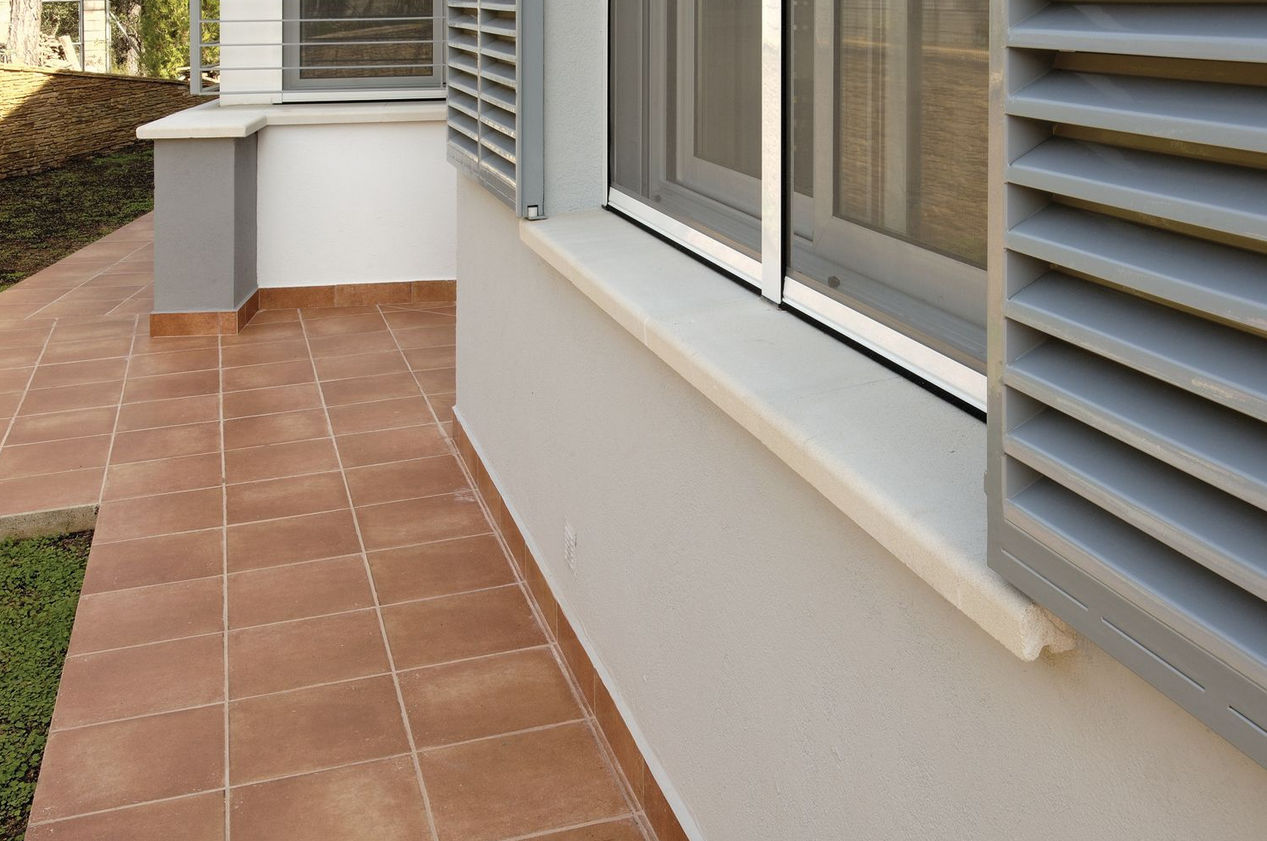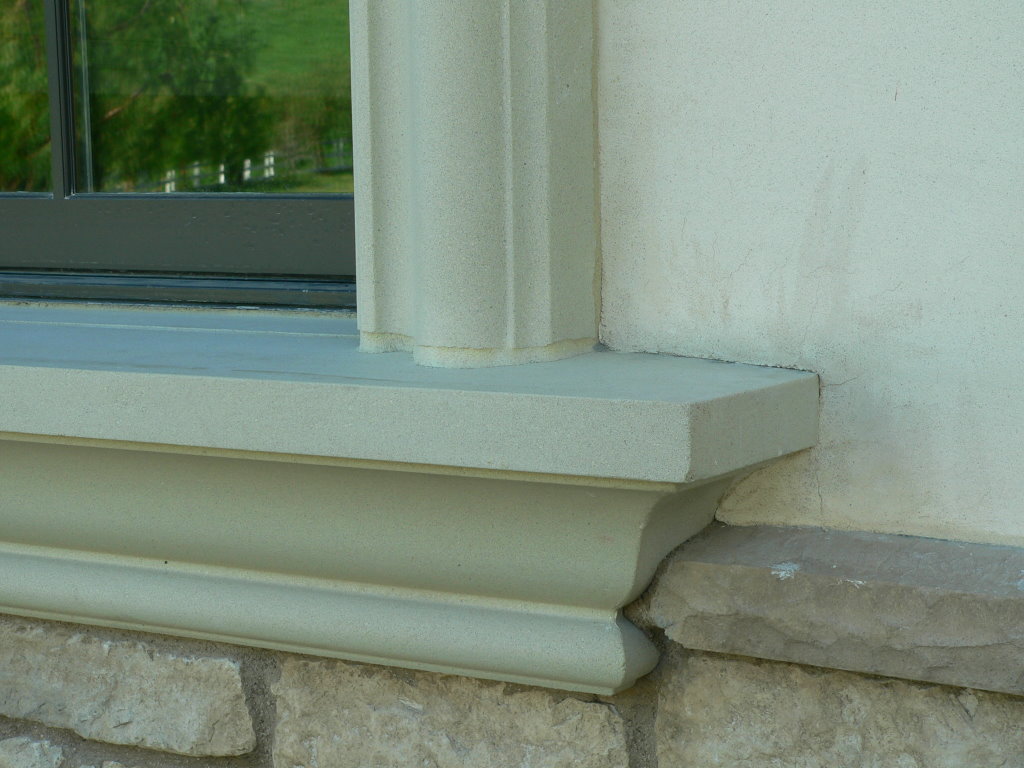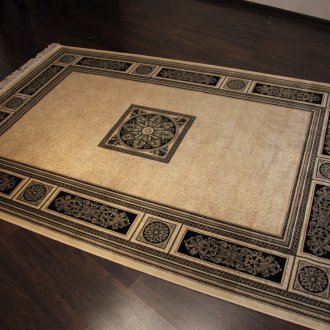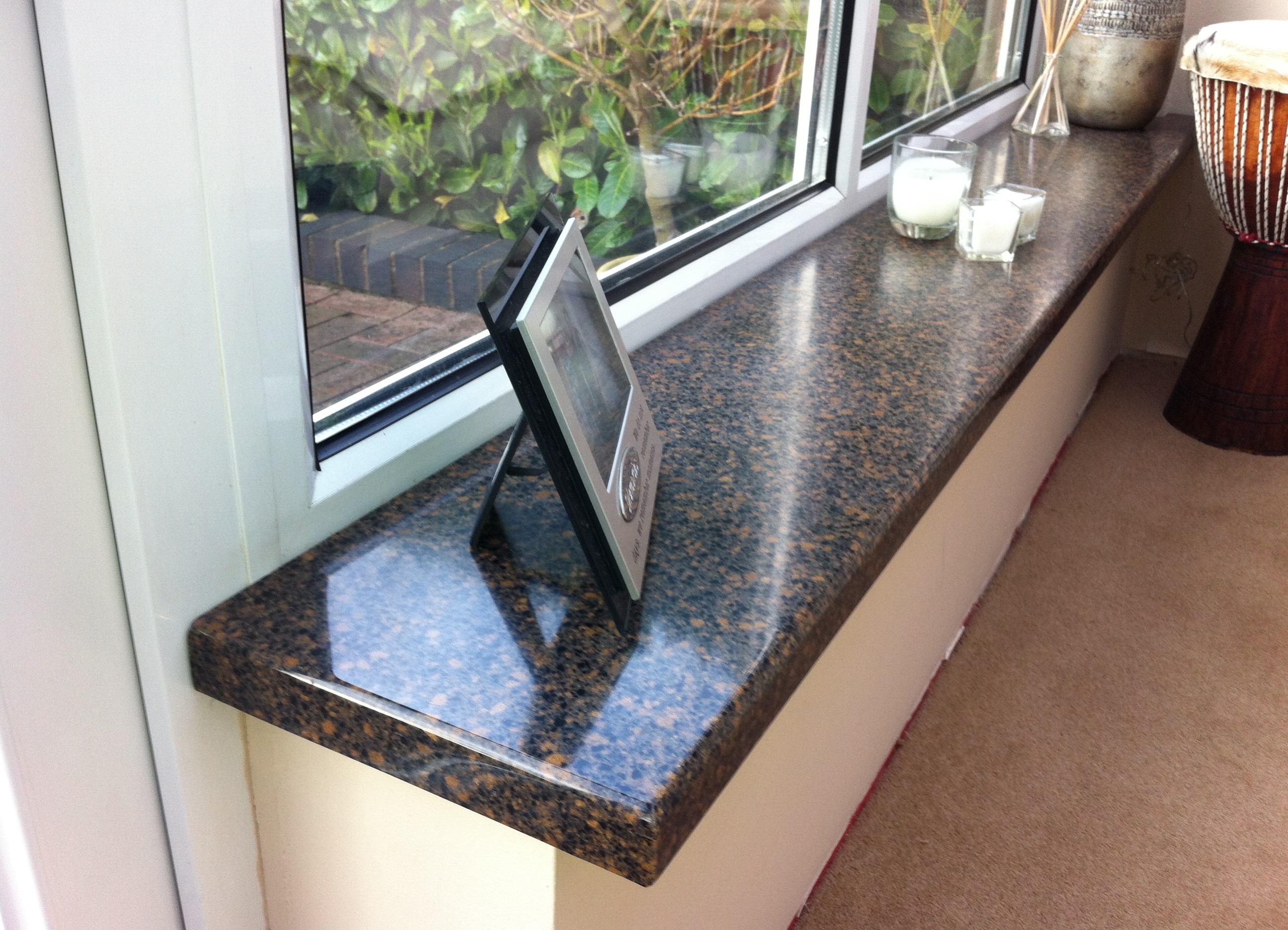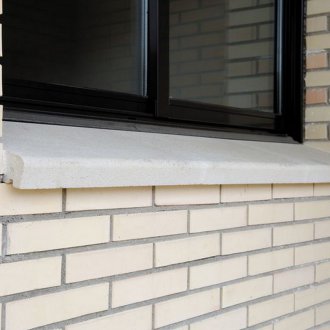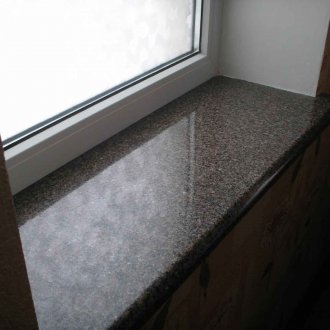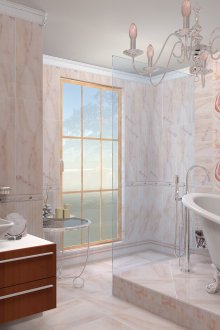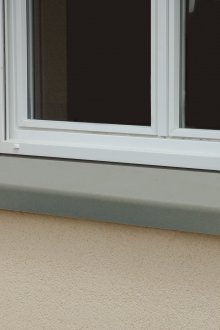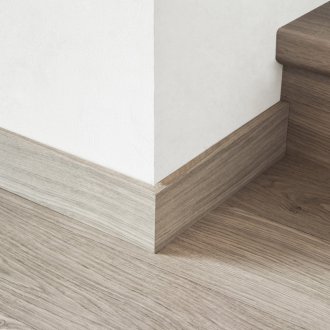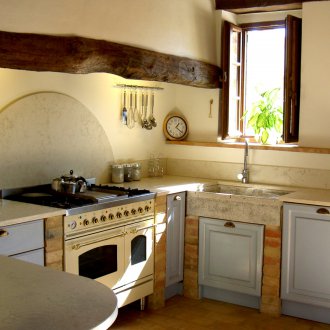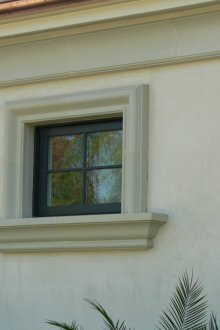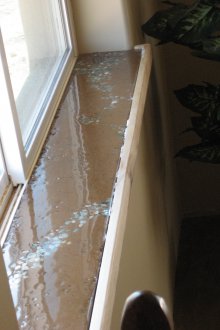Concrete window sill - a new life of old structures (20 photos)
Content
Opinions regarding the use of window sills may vary. Someone likes to sit comfortably at the window and watch passers-by or read a book, and for some, the windowsill is a real greenhouse. However, the basic requirements for the windowsill almost all coincide: moisture resistance, strength, pleasant appearance. Window sills are made of materials with various positive and negative qualities.
Advantages of concrete:
- practicality;
- durability;
- various decor is possible;
- strength.
The disadvantages are the formation of potholes, difficulties during restoration.
A window sill made of concrete can be repaired in various ways, which is determined by the degree of structural damage, the wishes of the owners. A non-standard solution to update the windowsill is to install a plastic overlay that will mask minor defects.
How to paint the windowsill?
First, a layer of the old protective and decorative coating must be removed. Depending on the thickness of the paint layer, one of three methods of removal is chosen for this: to heat with a building hair dryer (the paint will swell), using special formulations or using a construction hammer. If the paint layer is thicker than 3 mm, then it is optimal to use a construction hammer.
Then the rest of the work is carried out:
- the surface is cleaned of paint residues and primed;
- the windowsill is putty and after drying it is sanded;
- the surface is primed again and after drying it is painted.
If the construction is not saved by simple repainting, and there are noticeable damage on it, then the old concrete window sill is being restored.
How to repair a windowsill?
Restoration of a concrete window sill - a set of works to eliminate damage and restore the integrity of the subject. When updating windows, few now resort to the restoration of wooden frames. They are simply dismantled and plastic windows are installed, but window sills can still be fought and not dismantled, but restored. The solid advantage of concrete products is that they are much stronger than common plastic structures. In addition, avoiding the dismantling of the windowsill, you can save money. The only condition is that the window sill should be intact (not cracked).
Concrete window sill repair: work stages
- Old paint is removed - it is chipped with an hatchet to a concrete base. Dust and remnants of the old coating are swept away.
- The surface is primed (any concrete primer is suitable) and left for drying (time is indicated on the manufacturer's instructions, but not less than 24 hours).
- The lower edge of the free end of the window sill (kapinos) is formed by a protective perforated corner (fixed with putty). If you want to give the kapinos a rectangular shape, a corner is also fixed on the upper edge of the end. Since kapinos plays mainly a decorative function, you can give it a different shape or use inserts that add a non-traditional look to the window opening.
- The entire surface of the windowsill is covered with starting putty. Time is given for drying. If a decorative overlay is not used and surface painting is planned, then finishing putty is applied and left to dry.The window sill is cleaned with fine sandpaper, and the dust is thoroughly swept away.
- The surface is covered with enamel (optionally glossy / matte). It is recommended to apply three coats of paint. To avoid stains, it is better to use a roller.
If you take into account some nuances when choosing a shade of paint, you can get interesting design solutions. With the same shade of the frame, wall and window sill, the window opening becomes a niche and does not stand out in the room. The contrasting combination of a frame and a window sill of dark shades (lining can be used) with a light wall looks stylish. In this case, the window becomes an expressive element of the interior and may not even be additionally decorated with curtains.
How to make a windowsill?
There are two ways to equip a window opening with a new window sill: install a finished concrete product or fill the bottom of the window opening with concrete, after fixing the formwork.
- A wooden block is fixed along the edge of the opening. Its width will determine the width of the window sill, and the length - the length of the window sill, taking into account the protrusions near the window slopes. The installation of the frame is necessarily controlled by the building level.
- Formwork is installed (chipboard can be used). The thickness of the window sill is determined by the level of location of the window frame, so the chipboard is fixed in such a way that the surface of the window sill is aligned along its upper edge.
- For structural strength, a reinforcing cage is placed inside the window opening - a piece of the laying net. It is important to ensure that the ends of the mesh do not abut against the formwork (otherwise rusty spots may appear on the end of the window sill).
- Concrete is poured into the formwork to the edge of the formwork. If you use white cement and special dyes when mixing concrete, the window sill made will get an interesting shade. Moreover, when dye is added to the dry mix, the concrete will be evenly colored. And if the dye is poured into the mix of ready-mixed concrete, the product will acquire interesting stains that mimic marble.
- After the concrete has dried (5-7 days), the formwork is carefully dismantled.
- Protective and decorative finishing of the windowsill is performed in several ways. You can polish the surface (used for concrete with a shade) or lay tiles, mosaics (it is important to consider the thickness of the tile when determining the thickness of the window sill and fixing the formwork).
A similar window opening design is distinguished by lengthy installation / disassembly processes, but the window sill is ideal for parameters. And when installing the finished product, you can spend a lot of time fitting the design to the opening.
Various options for creating and repairing a concrete window sill make this product quite competitive in the building materials market, and the variety of surface finishes (wood lining, painting, imitation marble texture, mosaic) make the window sill an important element of the interior of the room.
